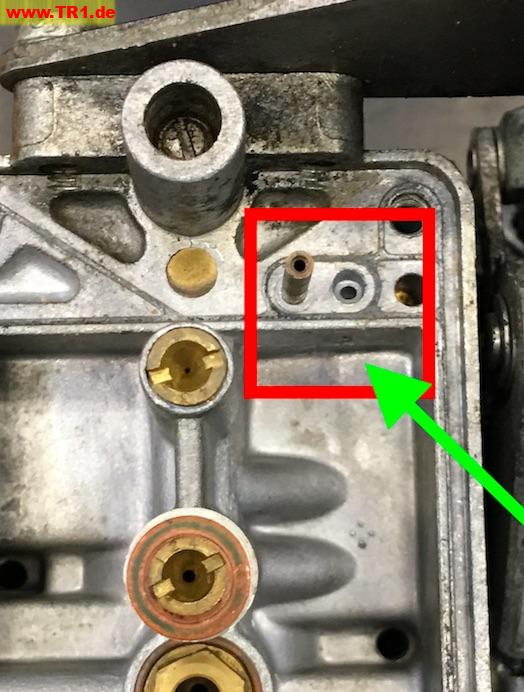Post by Benghan on 16.04.18 at 19:41:31
Are you sure that this it is a jet? I went in with a borescope today at work after a few hours in the ultrasonic cleaner and there was only a small indentation in the center of the plug probably made by me poking around with a thin steel wire trying to get the worst dirt out before the ultrasonic cleaning. If this is indeed a jet, do you know the diameter of the hole because i tried sticking in a 0,7mm wire while looking down with the borescope and the wire diameter was at least twice that of the hole.
In the attached picture:
#1 Green arrow: What is the function of this hole? it is above the fuel level in the carb so i guess its not for sucking in fuel to the choke.
#2 Is there a free passage in to air/fuel flow (main flow in to the cylinder) through the brass pipe? If too much gasoline is forced in through the green hole during braking could it overflow into the "main flow" given that the hole is plugged?
#3 If the hole is clogged, wouldn't this mean that the suction end brass pipe is constantly under the fuel level? Is there only a suction of fuel/flow of fuel through the brass pipe when the choke plunger is in an open position?
Many questions at once... ::)

In the attached picture:
#1 Green arrow: What is the function of this hole? it is above the fuel level in the carb so i guess its not for sucking in fuel to the choke.
#2 Is there a free passage in to air/fuel flow (main flow in to the cylinder) through the brass pipe? If too much gasoline is forced in through the green hole during braking could it overflow into the "main flow" given that the hole is plugged?
#3 If the hole is clogged, wouldn't this mean that the suction end brass pipe is constantly under the fuel level? Is there only a suction of fuel/flow of fuel through the brass pipe when the choke plunger is in an open position?
Many questions at once... ::)
